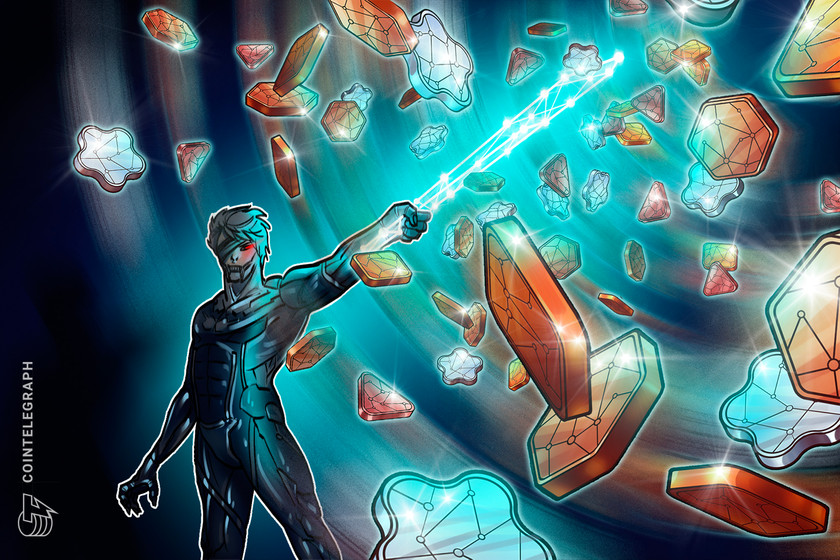NFT.NYC: Games and tokenization are driving NFT industry maturation


At NFT.NYC 2023, Cointelegraph’s team learned firsthand how nonfungible tokens are shaping the digital world of tomorrow.
From tokenizing investment assets to game avatars, nonfungible tokens (NFTs) have an array of applications that go beyond digital art, with more projects coming online despite the market downturn in 2022.
At the NFT.NYC 2023 conference, Cointelegraph’s team learned first-hand from experts, projects, companies and the NFT community how the technology is shaping the digital world. Check out the highlights of the three-day event below:
NFT games show signs of maturing
After years of development, the first batch of NFT-based gaming projects are entering the market, paving the way for a world in which real life and games will be blended, companies and developers told Cointelegraph.
“Ten years from now, I could be wearing my VR glasses or still using my phone, or probably using some new system interacting with the metaverse — but I’m going to be able to port my avatar and my NFT items. […] As a user, I’m going to start collecting more digital goods as NFTs, more than even physical goods, like clothing or watches or cars,“ explained Origin Protocol co-founder Matthew Liu regarding skins being interoperable across platforms.
Alex Connolly, co-founder of Immutable, has noticed an increase in competition in the gaming sector as more projects and developers seek to address blockchain-based challenges, such as interoperability:
“We‘re seeing a few alphas. There’s been a few things that have been playable here at NFT.NYC. Building games is hard. It takes a while […] to make them good. But I think we’re starting to see some of the best Web3 games that have ever been built. […] I can own my stuff and trade inside the game. I think that’s really powerful.”
Linus Chung, vice president of product at Origin Protocol, believes that companies trying to bring NFTs into their business should focus on significantly improving one pain point in people’s lives that traditional methods do not solve: “The last bull market has definitely shown that people will go through all of the hoops of acquiring crypto, getting a MetaMask wallet because there is some carrot at the end of that tunnel that’s way better than the traditional way of doing things.”


Real estate NFTs
One real-world application of NFTs is the tokenization of investment assets, and the real estate industry is one of its primary targets, event speakers said. Fintech company Ripple, for example, is working with other businesses developing real estate marketplaces and tokenized NFTs, Emi Yoshikawa, Ripple’s vice president of strategy and operations, told Cointelegraph.
“Real estate is one of the big focuses of the market that we are very excited about. Obviously, it’s a massive market, but it’s very illiquid and also very inefficient. […] We are partnering with some companies who are building a marketplace to provide tokenized NFTs for real estate,“ she noted, before adding that Japan is one helping lead the tokenization market in Asia.
At https://t.co/4d3FZVkwKM this year, the focus was really about real world utility. I gave a key note presentation on “The Future of NFT Capabilities” to introduce #XLS20 on #XRPL as an institutional grade ledger that is ideal for real world asset tokenization. It’s only the… pic.twitter.com/GApF1sE5BS
— Emi Yoshikawa (@emy_wng) April 14, 2023
Related: Play-to-Earn is not dead, but game publishers are looking for alternatives
A decentralized economy powered by NFTs
Speaking at NFT.NYC, Solon Labs CEO Maxwell Lyman noted that while many projects, blockchains and coins are decentralized, their infrastructure relies on centralized ecosystems, exposing them to security and censorship risks.
“All of these protocols, they’re decentralized on the back end. There are smart contracts live on the Ethereum blockchain or whatever respective blockchain they’re hosted on. But if you look at their front end, they are hosted on centralized servers, an AWS server, or something equivalent,“ explained Lyman, adding: “We are a football field away from getting to a point where the space is actually decentralized.”
NFTs may play a crucial role in achieving real decentralization, according to Lyman. “There’s something that I call global personal capitalism that’s going to be enabled by the proliferation of nonfungible tokens. It’s the capability of anyone in the world to be able to control and monetize their personal information, their activities or their creations.”


Uncertainty about NFT regulation
During the event’s panels, legal experts pointed out that NFTs are facing the same regulatory uncertainty as the broader crypto industry, particularly in the United States, with a major question in the space being whether NFTs can be considered securities.
Katrina Paglia, chief compliance officer of Pantera Capital, said the venture firm is relying on recent enforcement actions from the Securities and Exchange Commission to gauge regulators’ views on digital assets:
“We do a lot of scrolling of the SEC enforcement actions that have come out recently because with each one of these things, […] you glean a little bit more information about how they are thinking about applying for the Howey test. Until we actually get the clarity that the industry desperately needs and wants, we’re kind of relying on that for now.”
Magazine: Why join a blockchain gaming guild? Fun, profit and create better games

































